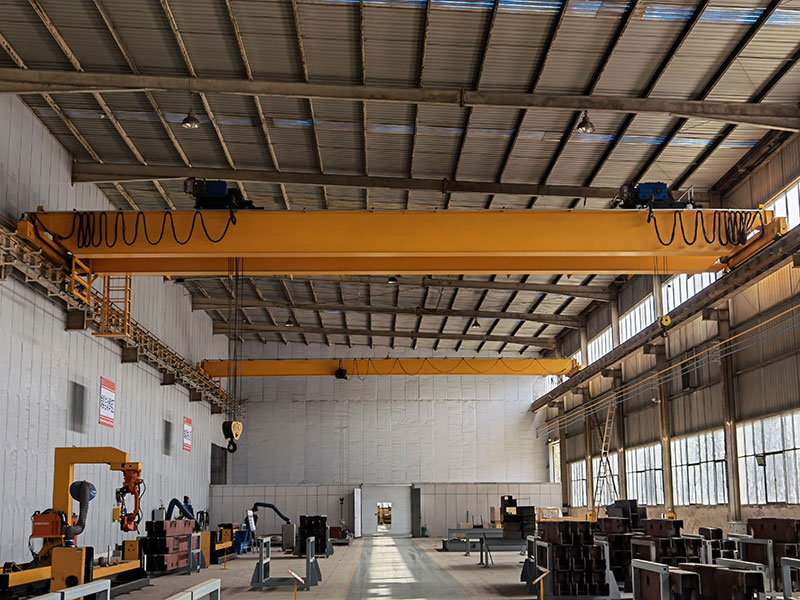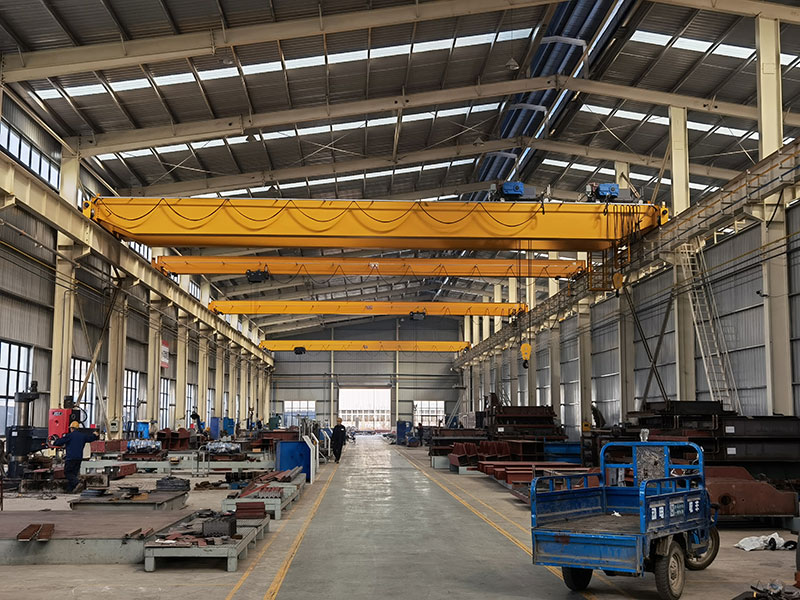Double girder overhead cranes are essential equipment in various industries, including manufacturing, construction, and warehousing. These cranes are known for their ability to handle heavy loads efficiently and with precision. Installing a double girder overhead crane is a complex process that requires careful planning, expertise, and adherence to safety regulations. In this comprehensive guide, we will walk you through the step-by-step process of installing a double girder overhead crane to ensure a safe and functional system in your facility.

Pre-Installation Planning
Before you begin the installation process, thorough planning is crucial. This phase involves assessing your facility’s needs, choosing the right type of double girder overhead crane, and obtaining all necessary permits and approvals. Here are some key considerations during the pre-installation planning stage:
a. Load Capacity and Requirements: Determine the maximum load capacity your crane will need to handle. Consider the type and size of materials or equipment to be lifted.
b. Crane Type: Select the appropriate type of double girder overhead crane based on your application, such as top-running or underhung cranes.
c. Clearance and Span: Measure the clear height and span of your facility to ensure there is enough space for the crane’s movement.
d. Power Supply: Ensure you have the necessary electrical infrastructure to power the crane. Consult with an electrician to address any electrical requirements.
e. Permits and Regulations: Obtain the required permits and ensure compliance with local, state, and federal regulations regarding crane installation.
Structural Analysis
Before proceeding with the installation, perform a structural analysis of the building or structure where the double girder overhead crane will be installed. Ensure that the supporting structure can handle the crane’s weight, including the load capacity it will carry. If necessary, reinforce the structure to meet safety standards and engineering specifications.
Selecting the Crane Components
Choose the specific components and accessories required for your double girder overhead crane system. This includes the crane bridge, hoist, trolley, runway beams, and controls. Ensure that all components are compatible and meet the load capacity and operational requirements of your application.
Foundation and Runway Installation
The installation process begins with preparing the foundation and runway for the crane. Follow these steps:
a. Foundation: Excavate and pour the foundation for the crane’s runway beams. The foundation must be level, stable, and able to support the crane’s weight and dynamic loads.
b. Runway Beams: Install the runway beams securely on top of the foundation. Ensure they are level and parallel to each other, following the specified span and alignment.

Assemble the Crane Structure
Now it’s time to assemble the double girder crane structure, which includes the bridge, trolley, and hoist. Here’s how to do it:
a. Bridge Assembly: Assemble the bridge by attaching the two girders to the end trucks. Ensure that the girders are level and aligned correctly. Lift the assembled bridge using a crane or other lifting equipment and position it on the runway beams.
b. Trolley Assembly: Assemble the trolley and attach it to the bridge. Ensure smooth movement and secure all connections.
c. Hoist Attachment: Install the hoist on the trolley, making sure it is centered and properly aligned with the bridge and trolley. Securely fasten all connections.
Electrical Installation
The electrical installation is a critical aspect of the crane’s functionality. It includes wiring the controls, power supply, and safety features. Follow these steps:
a. Power Supply: Connect the crane’s power supply to the electrical infrastructure of your facility. Ensure that the power source matches the crane’s voltage and amperage requirements.
b. Controls: Install the crane controls, including pendant controls or radio remote controls, depending on your system. Test the controls to ensure they operate the crane smoothly.
c. Limit Switches and Safety Features: Install limit switches, safety devices, and emergency stop controls to enhance the safety of crane operations.
Load Testing and Calibration
Before putting the double girder overhead crane into full operation, conduct load testing and calibration to ensure its performance and safety. This involves:
a. Load Testing: Gradually apply a controlled load to the crane while monitoring its performance. Ensure that the crane can lift and move loads within its specified capacity without issues.
b. Calibration: Calibrate the crane’s controls and safety features to operate smoothly and respond accurately to user inputs.
Training and Certification
Ensure that operators and maintenance personnel receive proper training and certification in crane operation and maintenance. This is critical for the safe and efficient use of the double girder overhead crane.
Regular Maintenance and Inspection
After installation, establish a routine maintenance and inspection schedule for the crane. Regular inspections and maintenance will help extend the crane’s lifespan and ensure its continued safe operation.
Conclusion
Installing a double girder overhead crane is a complex process that requires meticulous planning, expert knowledge, and adherence to safety standards. By following the steps outlined in this guide, you can ensure the successful installation of a crane system that meets your facility’s needs and operates safely and efficiently. Always consult with experienced crane installation professionals and engineers to guarantee compliance with regulations and industry best practices throughout the installation process.
